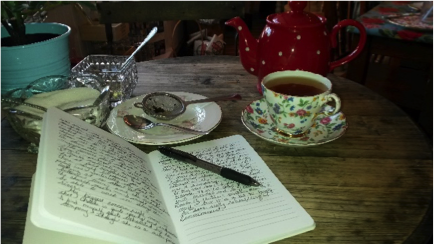What’s In and What’s Out: My Circle of Control
The deadline was looming: write an article on helping students learn to live within their ‘Circle of Control.’ I was delaying the process, making excuses, letting the urgent displace the important, fretting about what others would think about the article. That’s when I had a deeper revelation about my own circle of control and what I actually had control over.

I am passionate about coming alongside others, nurturing and encouraging them to walk in their God-given identities. Working as a school nurse in a cross-cultural setting is providing opportunities to teach and speak into the lives of children and staff about their whole selves: body, mind and soul. I want teachers and students to know who God has created them to be and be the healthiest version of that self. I am also eager to implement tools that build self-awareness, increase resilience, improve self-esteem, and develop a love of learning.
While searching for resources, I encountered My Circle of Control on Big Life Journal’s website.[1] The ‘Circle of Control’ is a tool that helps students identify areas where they do and don’t have control. Students learn that they do not control what others think, the weather, past mistakes, what teacher they have or what school they attend. Instead, focusing on what they can control helps them feel good about themselves and empowers them to make choices that will impact them personally.
Let me share how I used the ‘Circle of Control’ to provide students with tools to pursue their own personal growth. Perhaps this example will give you ideas to use in your school.
I chose to introduce the ‘Circle of Control’ to primary students during morning meeting time, a 15-minute block at the beginning of the school day when our students and staff connect as a large group. We created a tangible circle that students could step into and hold around themselves by using a hula hoop as a visual and tactile symbol of their personhood and separateness from others.
I distributed to the students laminated words and phrases from Big Life Journal’s Circle of Control poster. These cards had phrases of ‘Things I can Control’ (e.g., my behaviour, my words, my effort, my actions, my attitude, asking for help, taking care of myself) and ‘Things I Can’t Control’ (e.g., my grades, my school, my past mistakes, my family, my teachers, other people’s words, other people’s opinions, other people’s behaviour). Collectively the students decided which words belonged either inside or outside the ‘Circle of Control.’ Having students dialogue about where the different ‘things’ belonged helped reinforce the distinction between ‘self’ and ‘others.’

We then displayed the results on a bulletin board that was visible to both students and staff, providing common language and visuals to use when discussing specific situations. Since the bulletin board was also visible to parents during drop-off and dismissal time, it served to raise awareness even among parents. Several parents commented on how the ‘Circle of Control’ concept was impacting them personally, challenging them to think about areas over which they did and did not have control in their own lives. They were able to share personal experiences and convey empathy and understanding as they engaged their children in conversions about ‘My Circle of Control.’
Helping students learn to live within their ‘Circle of Control’ nurtures their growth in understanding themselves and others. It assists them in developing and establishing healthy boundaries necessary for engaging in loving, intentional, purposeful relationships with those around them. Students with a maturing self-awareness are better able to cope with everyday challenges, which impacts their academic success and improves their social health.
As important as it is for us to help students understand their ‘Circle of Control,’ we as educators also benefit by applying this concept to our own lives. Parker J. Palmer in his book The Courage to Teach: Exploring the Inner Landscape of a Teacher’s Life, reminds us that “the personal can never be divorced from the professional. ‘We teach who we are’…”[2] Even in writing this article, I needed to recognize and be honest about the things inside and outside my circle of control. For your circle, what’s in and what’s out?
Janice B.
School Nurse
[1] Find resources at the Big Life Journal website at https://biglifejournal.com/. This website has a plethora of Growth Mindset tools. Check it out and sign up for their weekly free printables.
[2] Palmer, Parker J. (1997) The courage to teach: Exploring the inner landscape of a teacher’s life. Jossey-Bass.
Photo Credits:
Encouraging a Student via Bingham Academy
My Circle of Control by Janice B.






